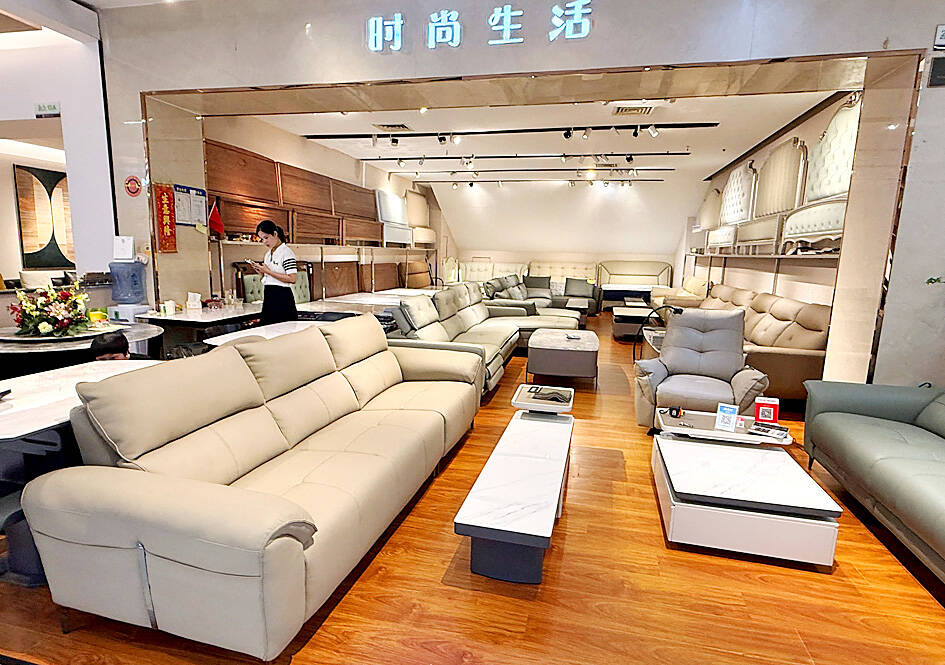By David Kirton / Reuters, FOSHAN, China
In China’s “Furniture Kingdom” of Lecong, home to a strip of cavernous malls, vendors shrugged off the latest round of tariffs from Washington, saying they have long given up on the US market.
As part of his latest tariff onslaught, US President Donald Trump on Thursday announced a 50 percent levy on imported kitchen cabinets and bathroom vanities, as well as a 30 percent tariff on upholstered furniture, to take effect on Wednesday.
However, in one of dozens of malls along the strip in southern China, Feng Junyuan, a sales manager at Hansen Outdoor Furniture, which makes upholstered chairs, said her company had already reduced its reliance on the once lucrative US market.

Photo: Reuters
“We haven’t really bothered with the US market since last November, when it was clear the tariffs were coming in. No one visits us from there, and we don’t try to sell. It’s just too expensive,” she said.
Lecong, like other factory towns in China’s “workshop of the world” in the Pearl River Delta with large manufacturing clusters, features more than 180 furniture malls crammed with retailers, wholesalers and distributors selling products from plywood tables to plush leather sofas.
The Web site of the Lecong Chamber of Commerce says the town became the earliest furniture market in China more than 30 years ago, when it catered to international customers, including those in the more lucrative and higher margin European and North American markets.
However, in recent years, geopolitical tensions, tariffs and rising labor and production costs have hurt Chinese manufacturers who have had to adapt to survive.
Meanwhile, the domestic Chinese market has also been hurt by weak consumption amid an economic downturn and property market slump.
Feng has downsized her workforce to 10 to 20 workers, about one-quarter of its peak. She now sells about 60 percent of her products domestically and 40 percent abroad, mostly to India and Africa.
Jin Yun, owner of Hanfei Furniture, a mid to high-end sofa maker in a mall featuring slogans such as “your one-stop home furniture partner,” said business this year had been average, with most of his customers in the Middle East and Southeast Asia.
“Last year’s tariff increase had a big impact. We still had two American customers at that time, but they ended up cancelling an order when the tariffs came and there was no sale,” he said.
“There are a lot of problems for manufacturers in every industry, not just furniture. The market is smaller and there’s a lot of competition, but we’ll survive,” he added.
The latest tariffs come after Trump last month promised to help “bring the furniture business back” to North Carolina, South Carolina and Michigan.
Furniture and wood products manufacturing employment in the US has halved since 2000 to about 340,000 today, according to US government data.
Trump has made tariffs a core policy of his second term, with sweeping duties levied on dozens of trading partners, including China and Vietnam — two major furniture makers — that have then been sometimes adjusted amid a flurry of negotiations.
“It’s not that we don’t sell to America, we’d be happy to,” said Ling, a sales manager who was sitting in her nearly deserted showroom scrolling on her phone.
“It’s just I haven’t seen an American customer here since the [COVID-19] pandemic,” Ling said.